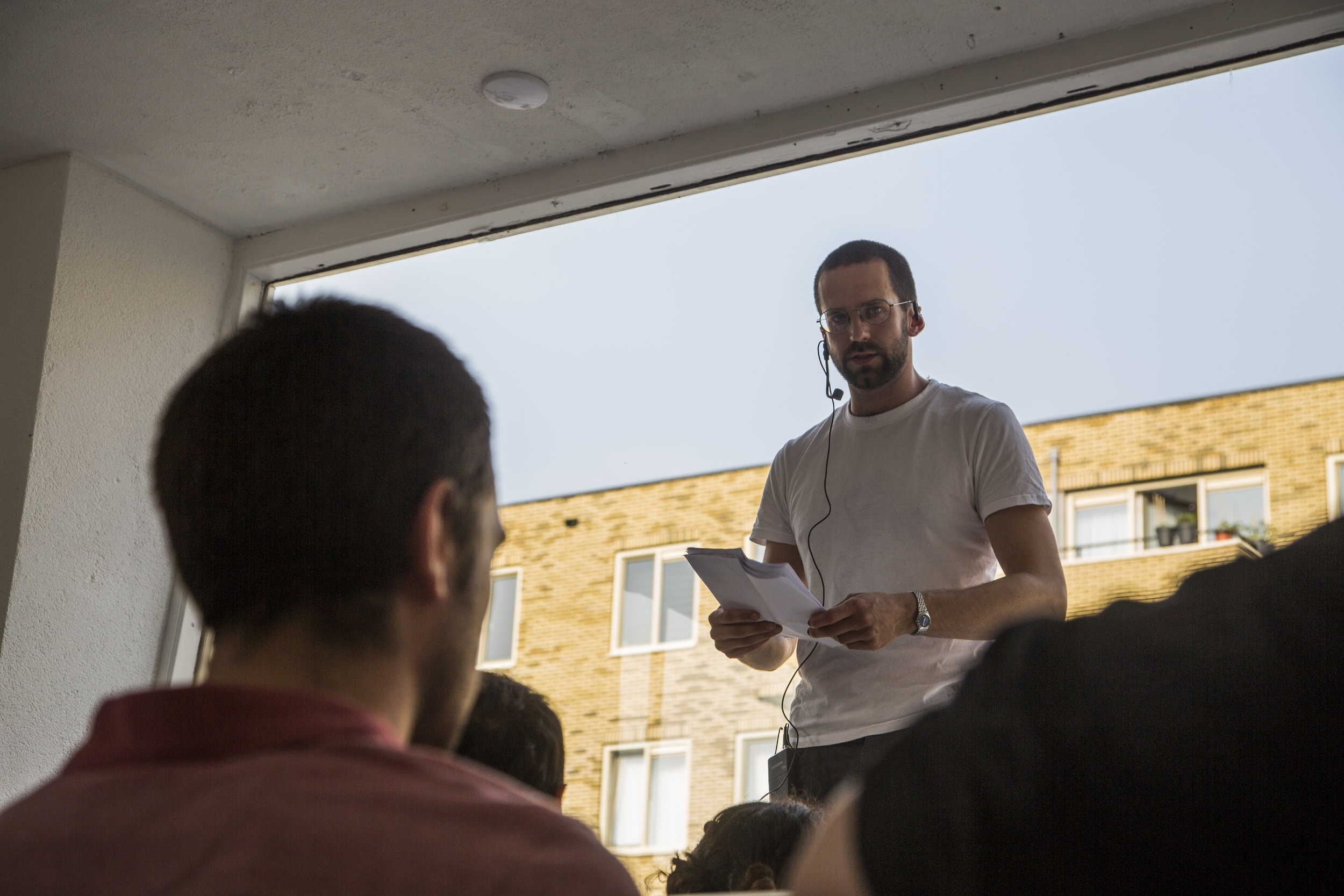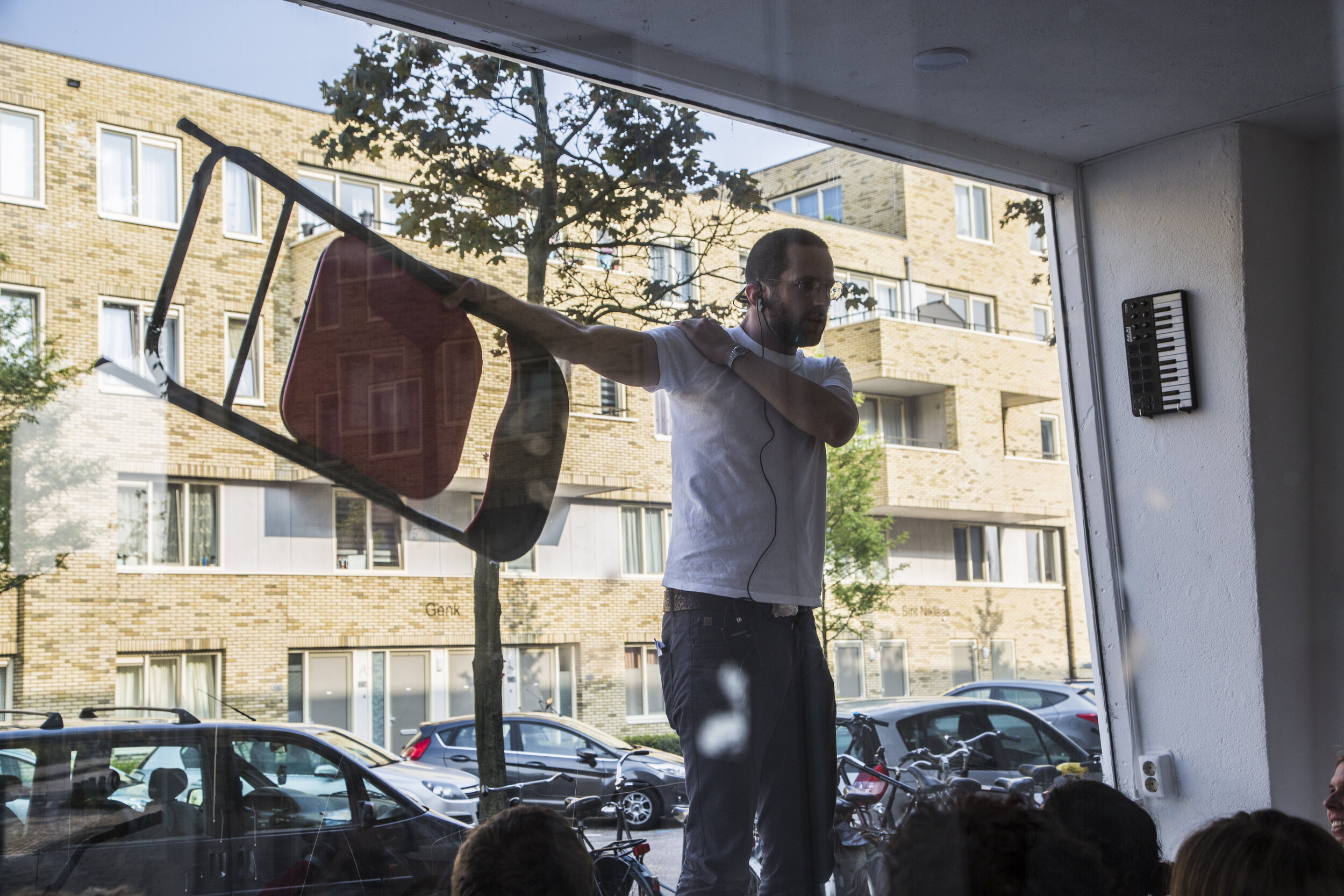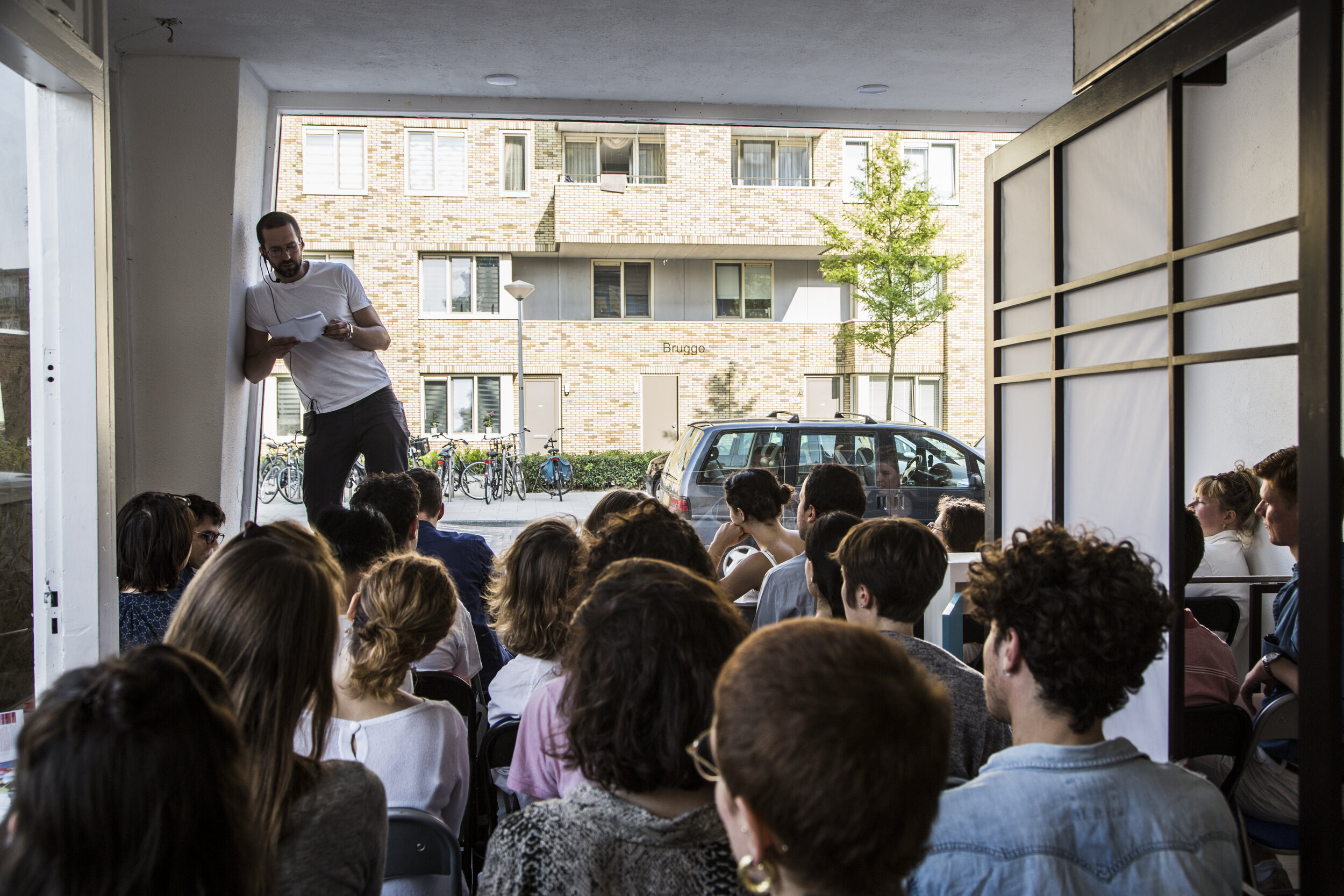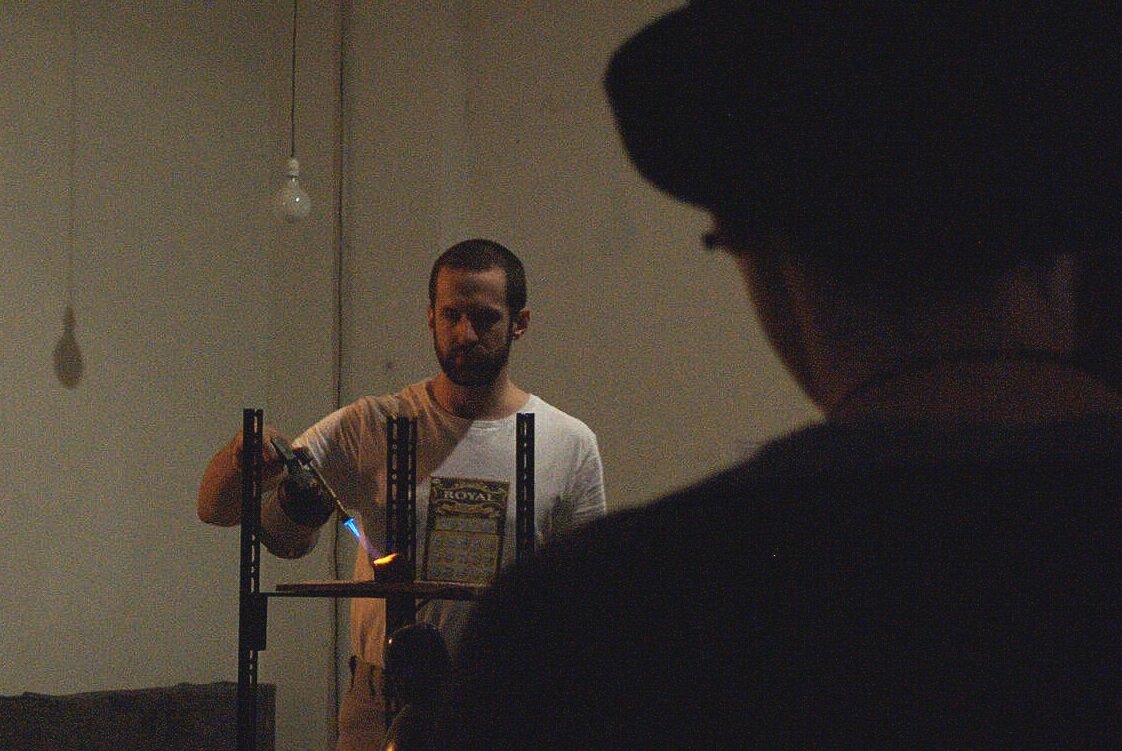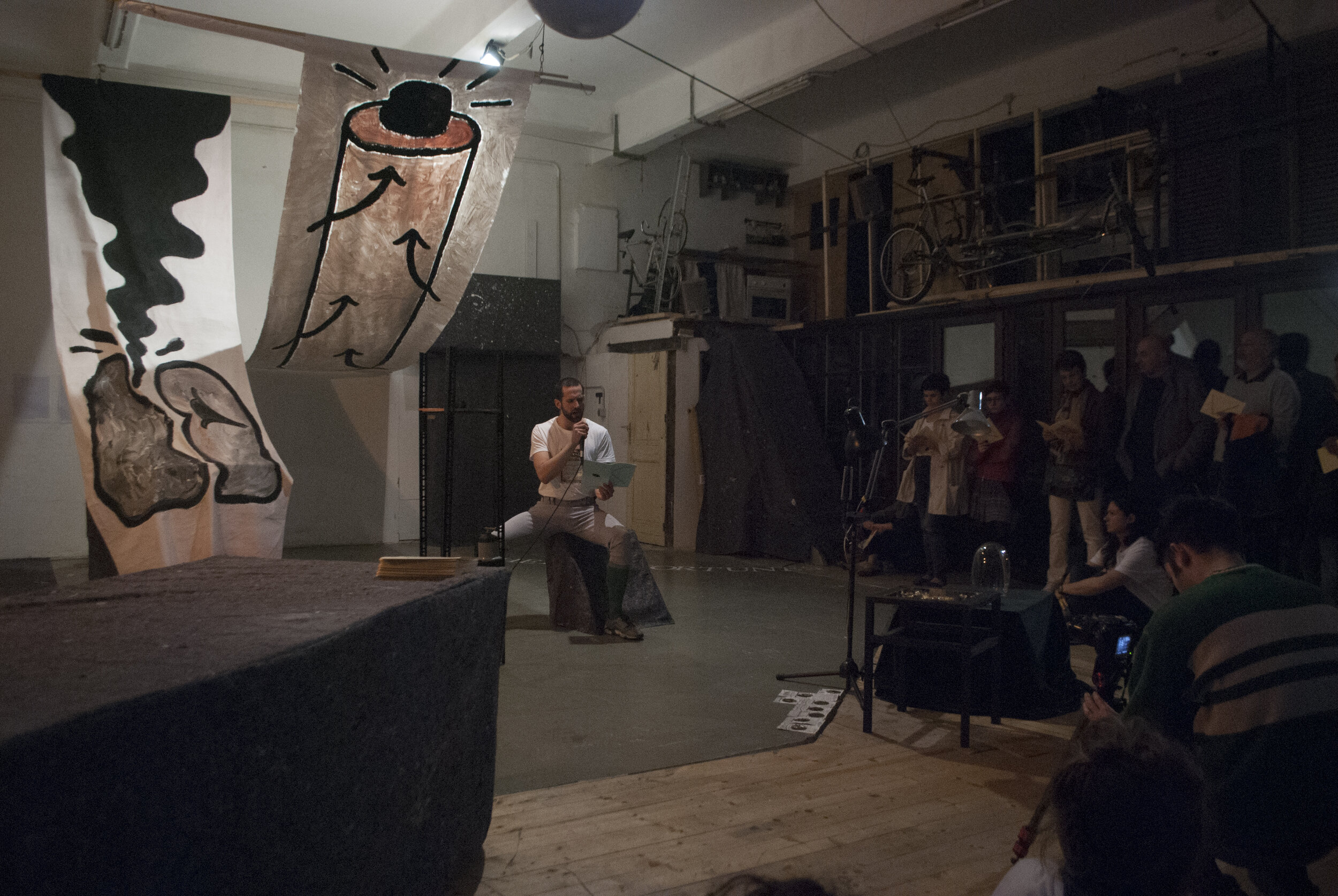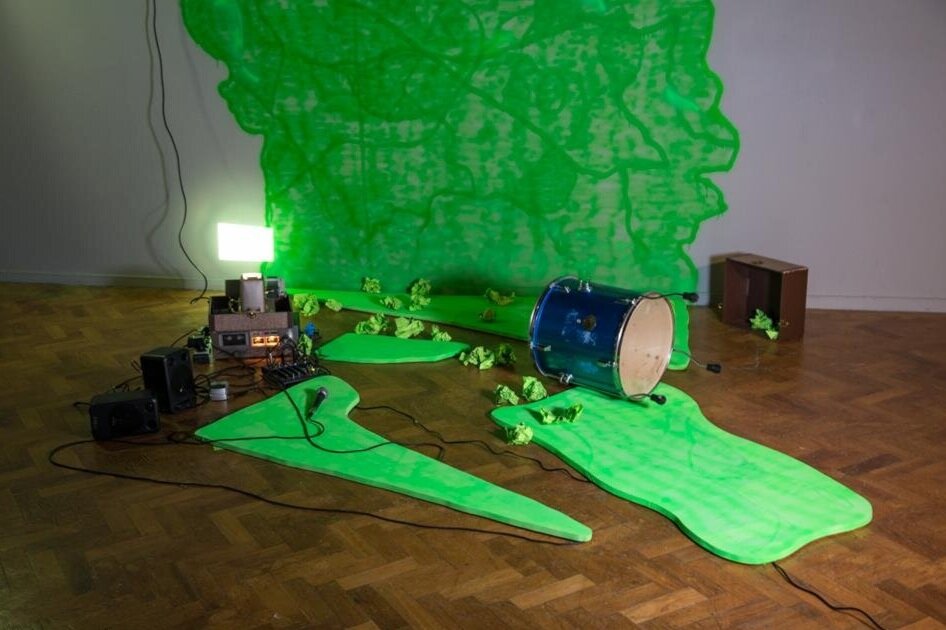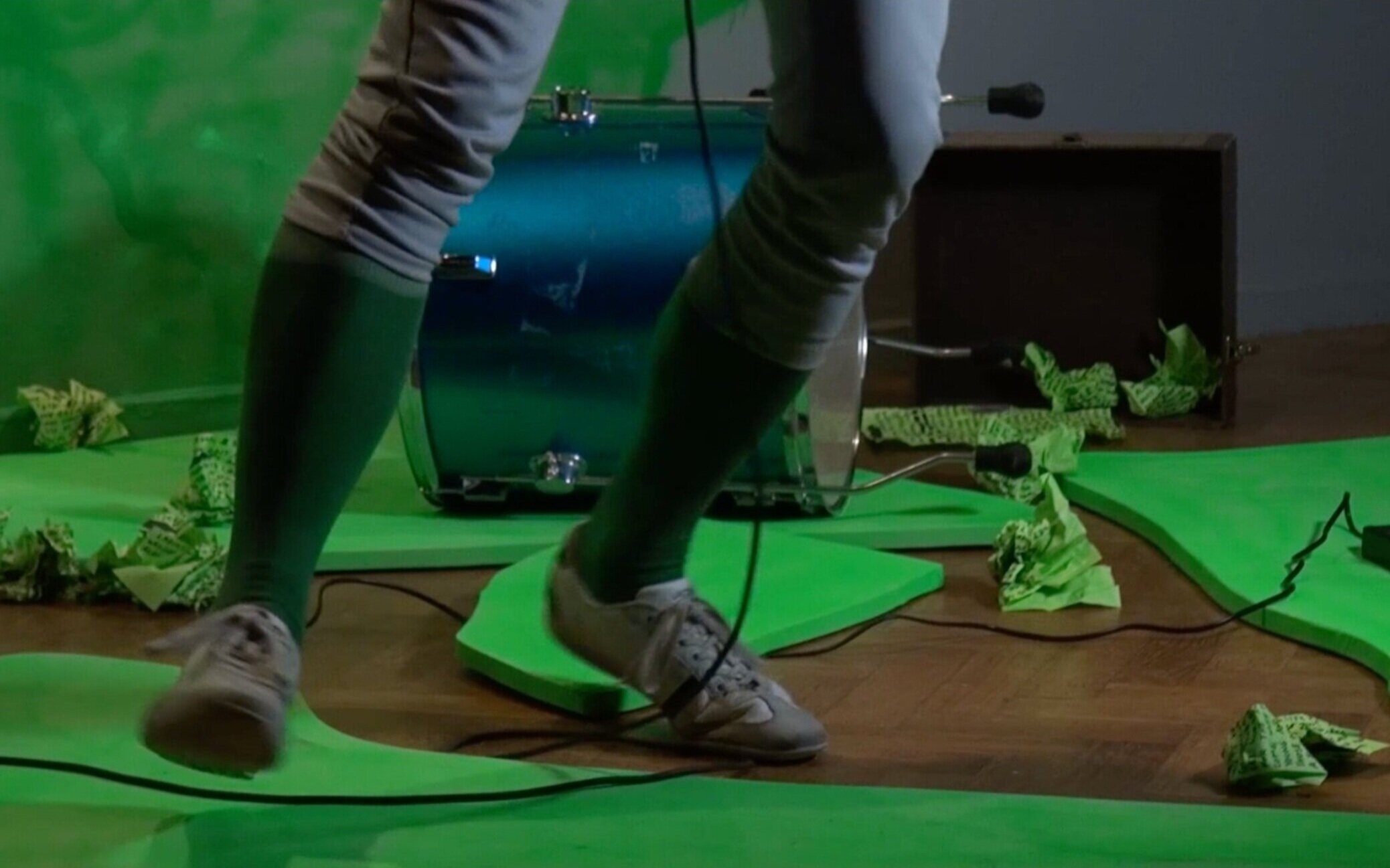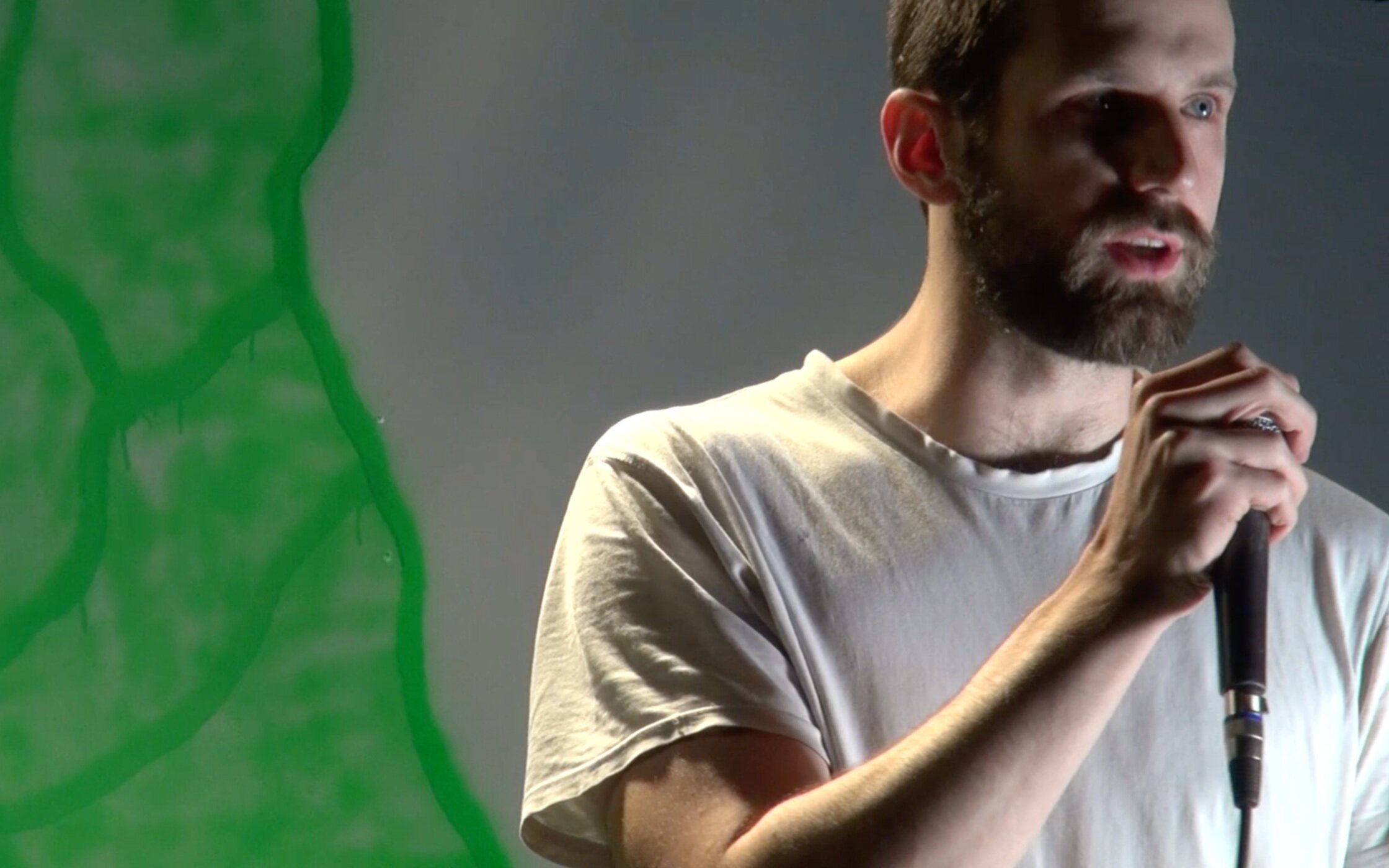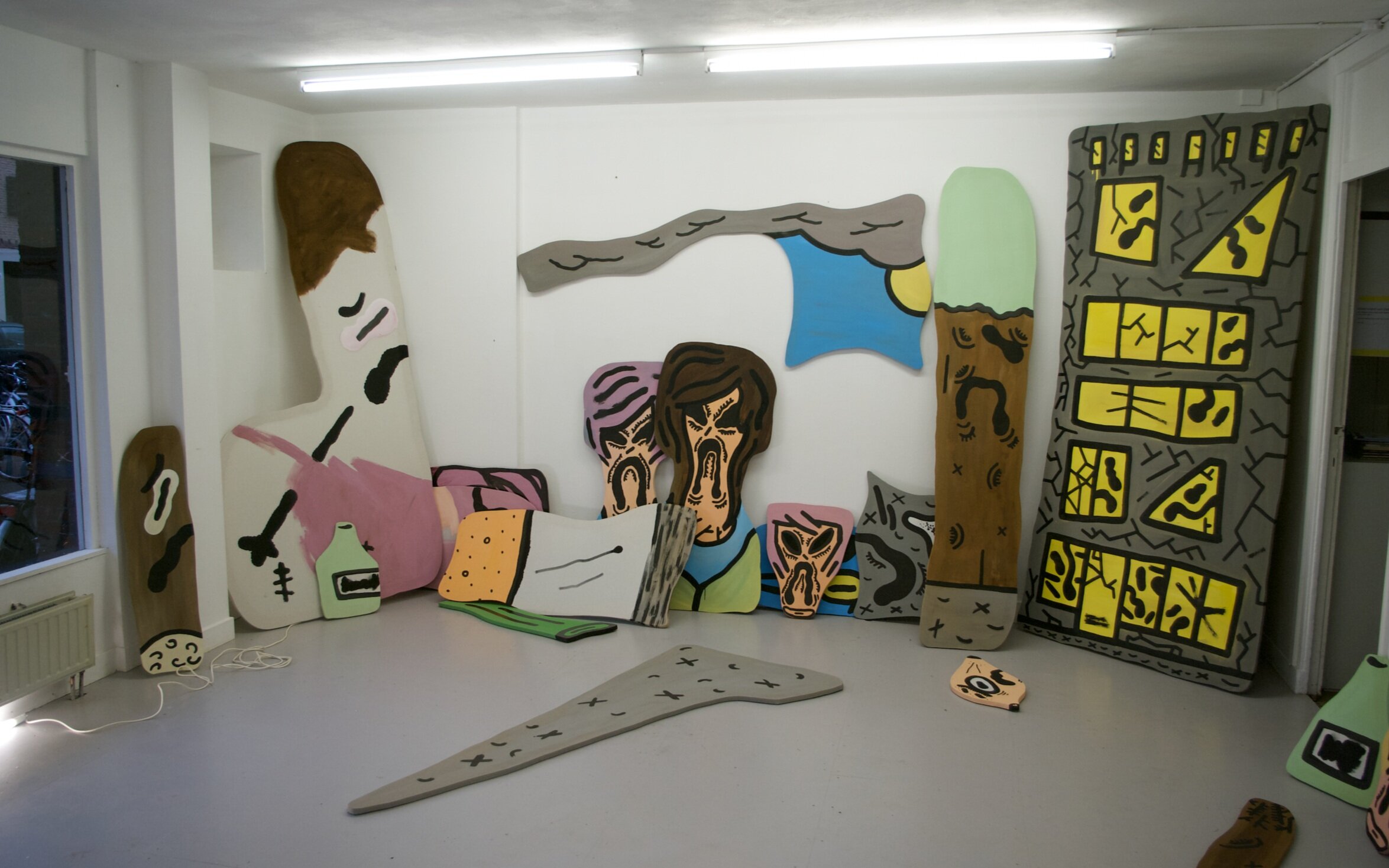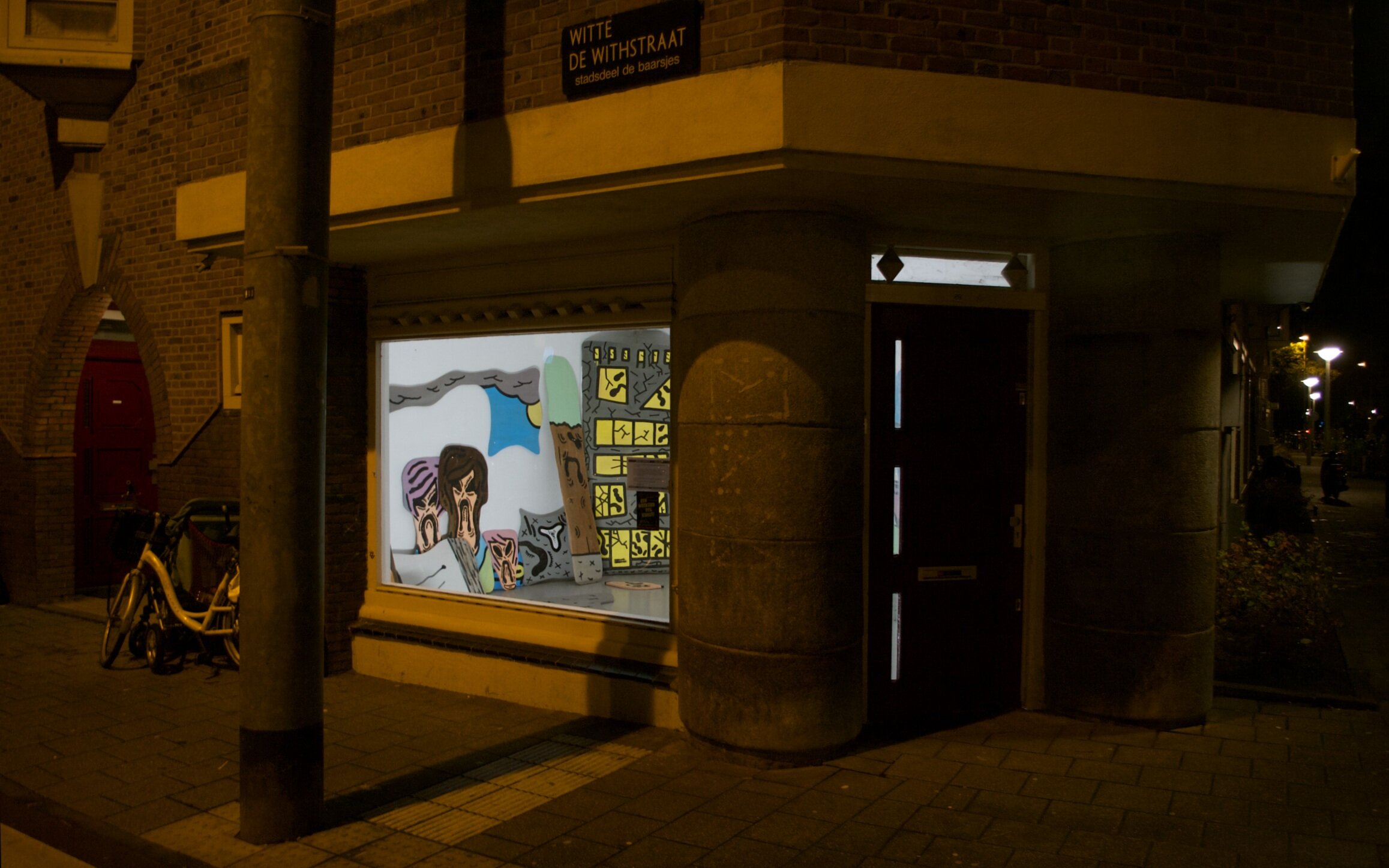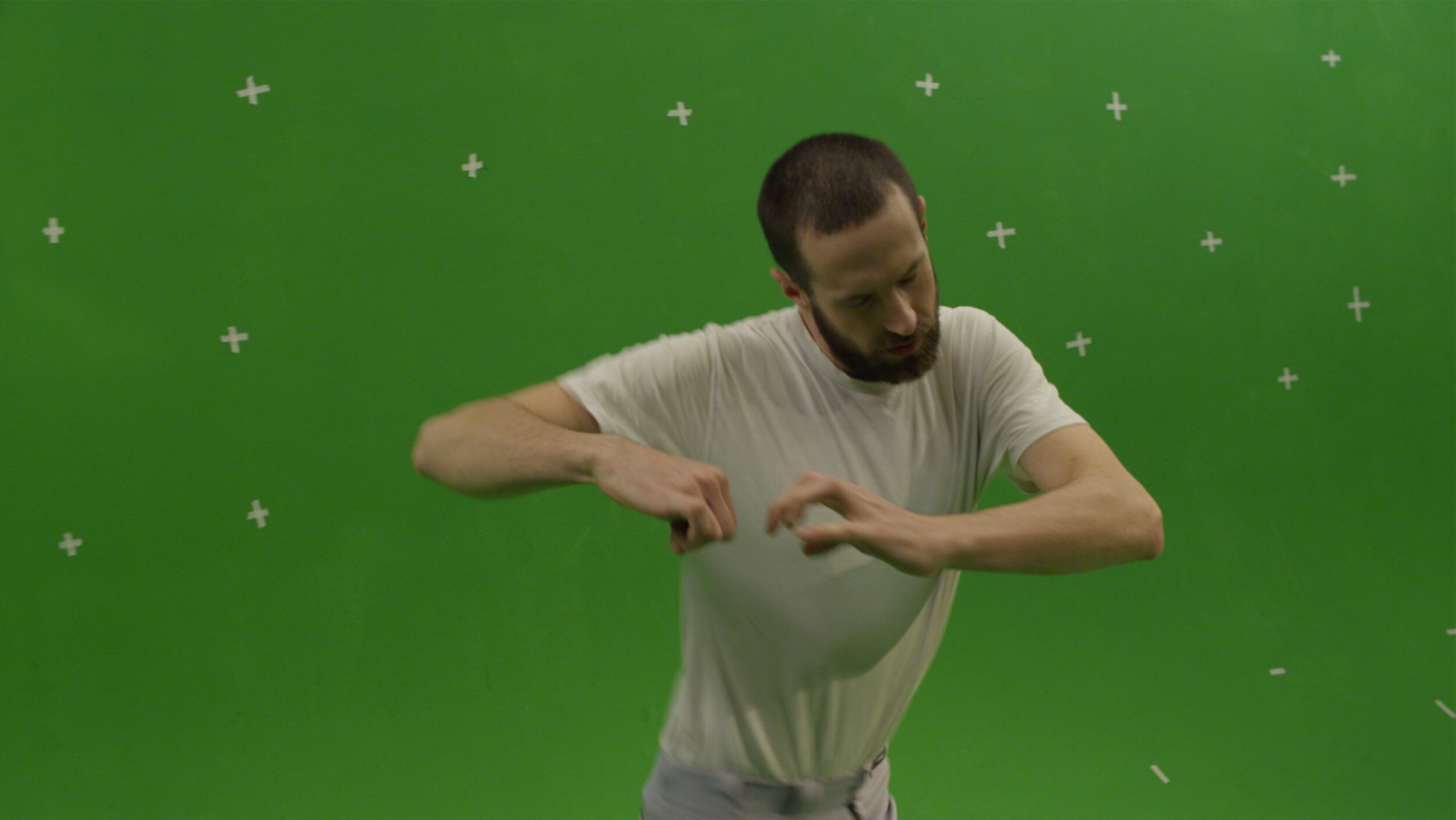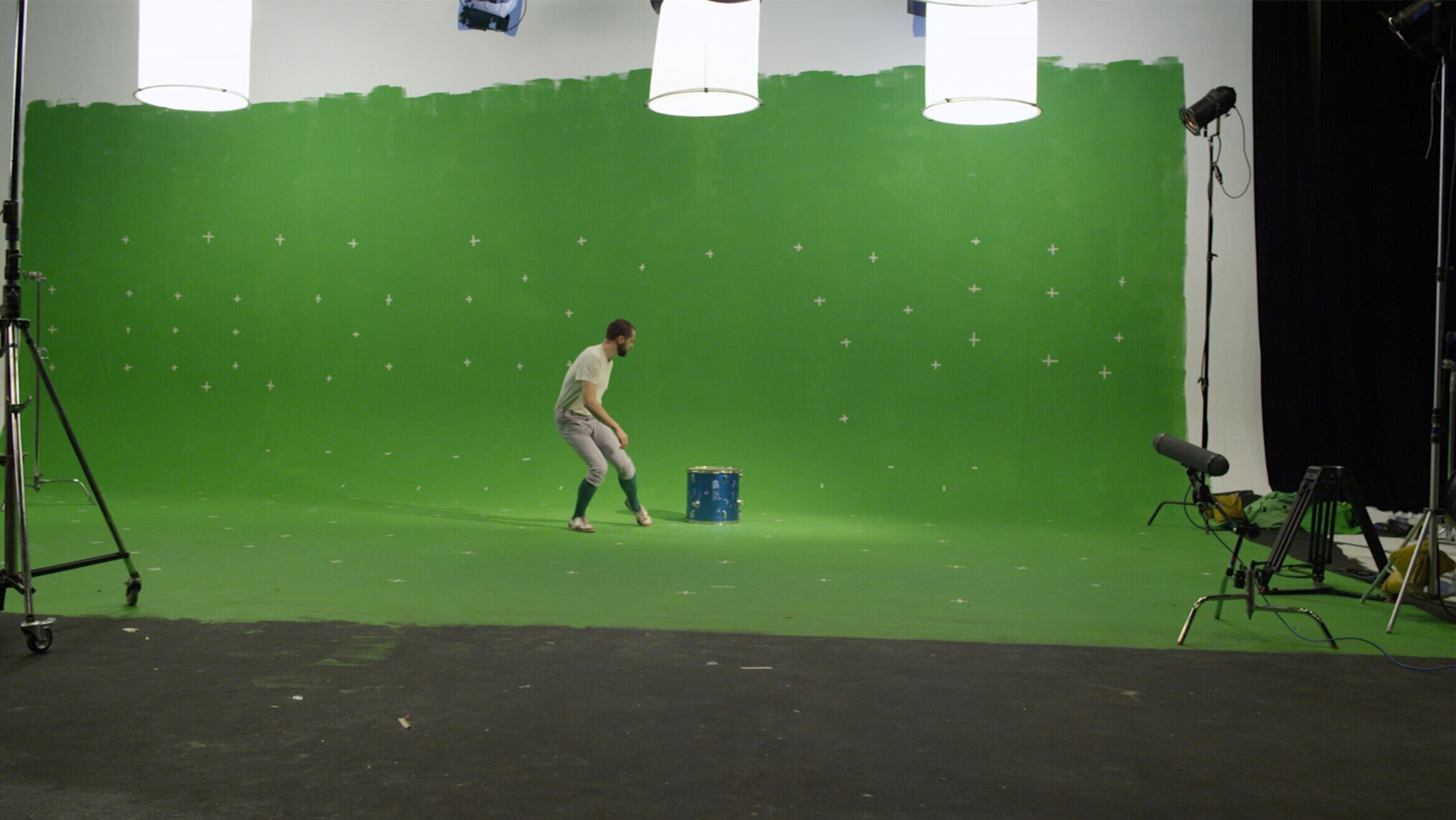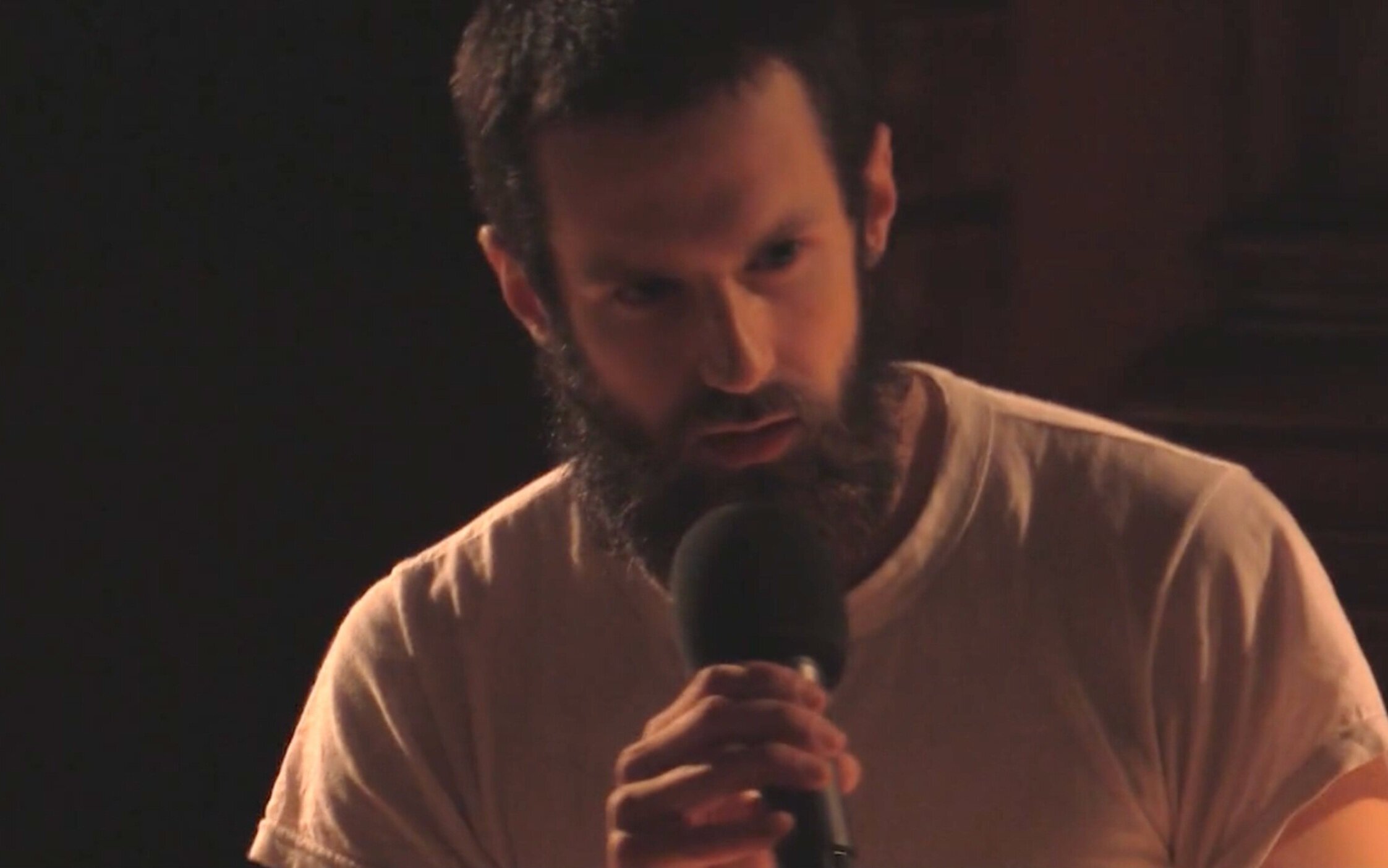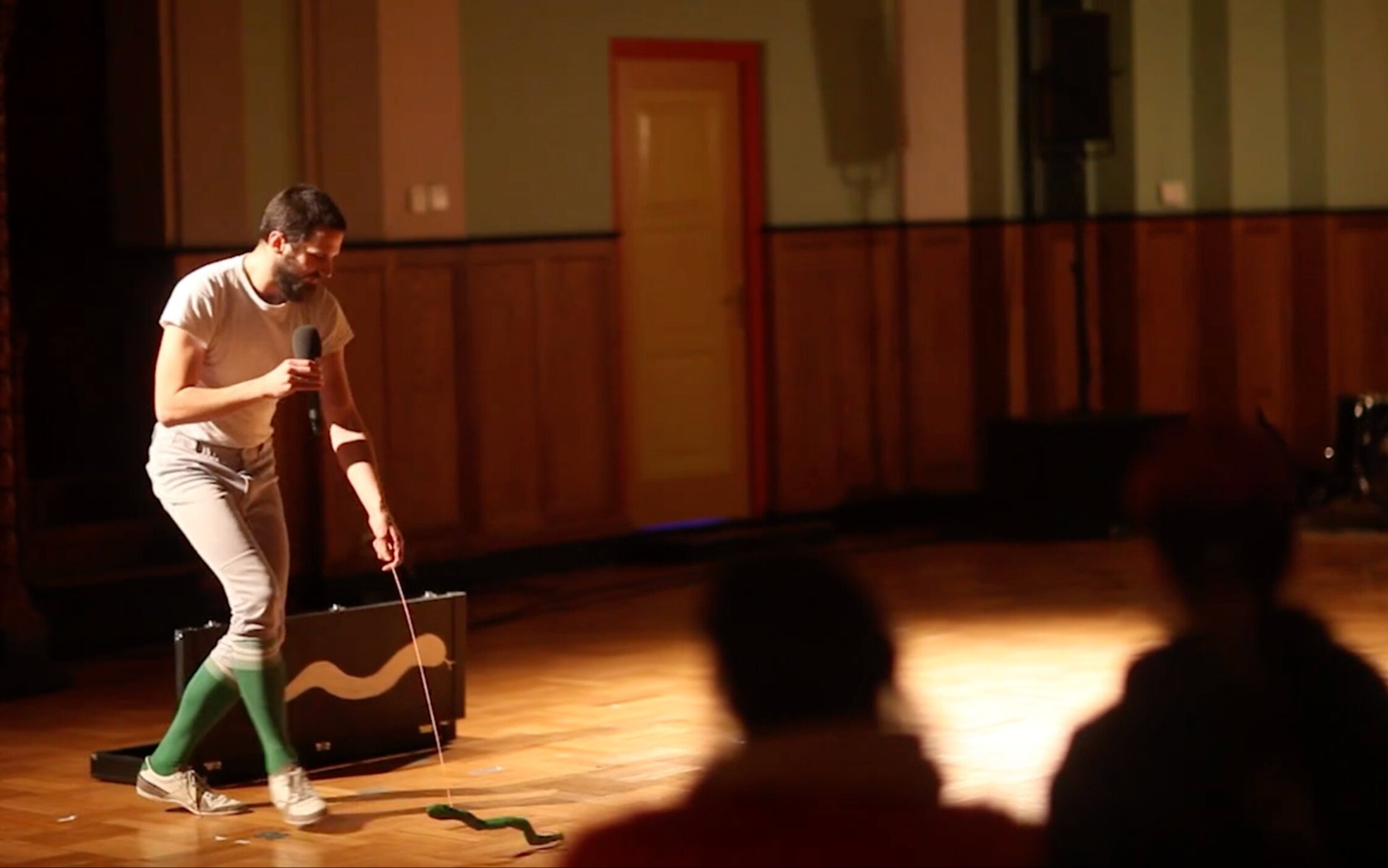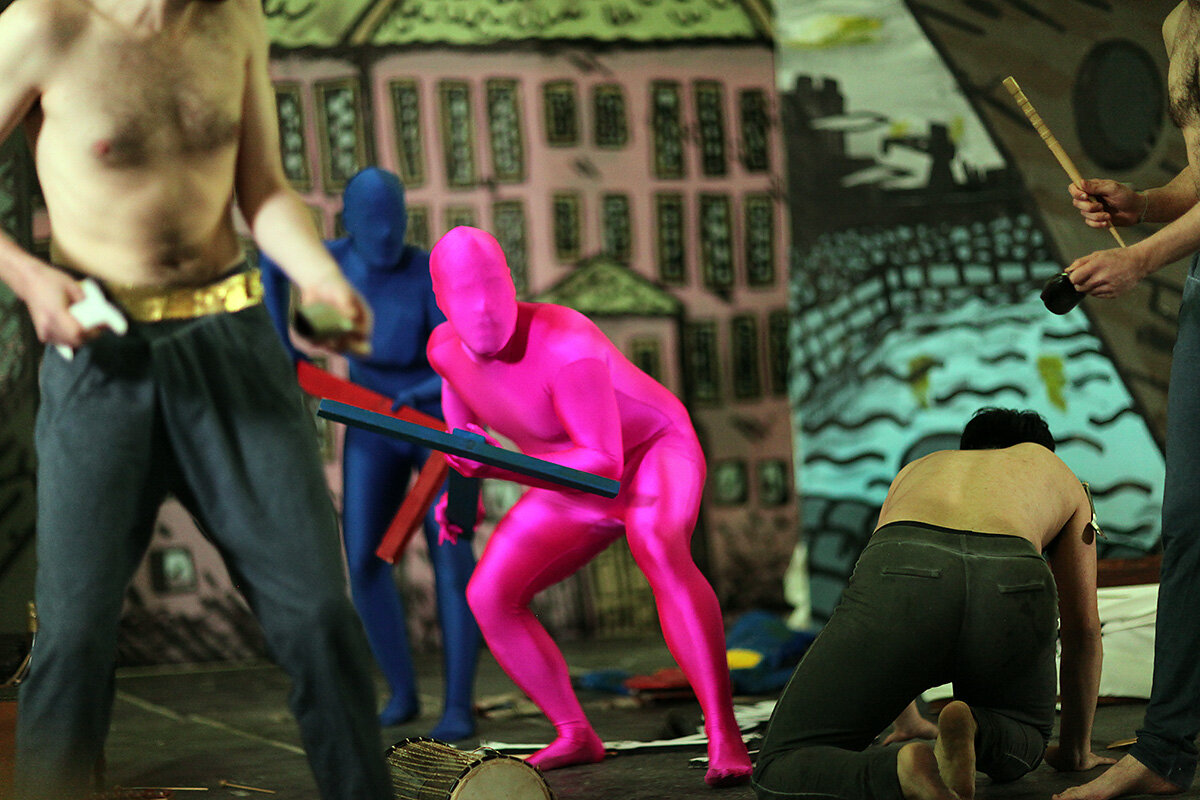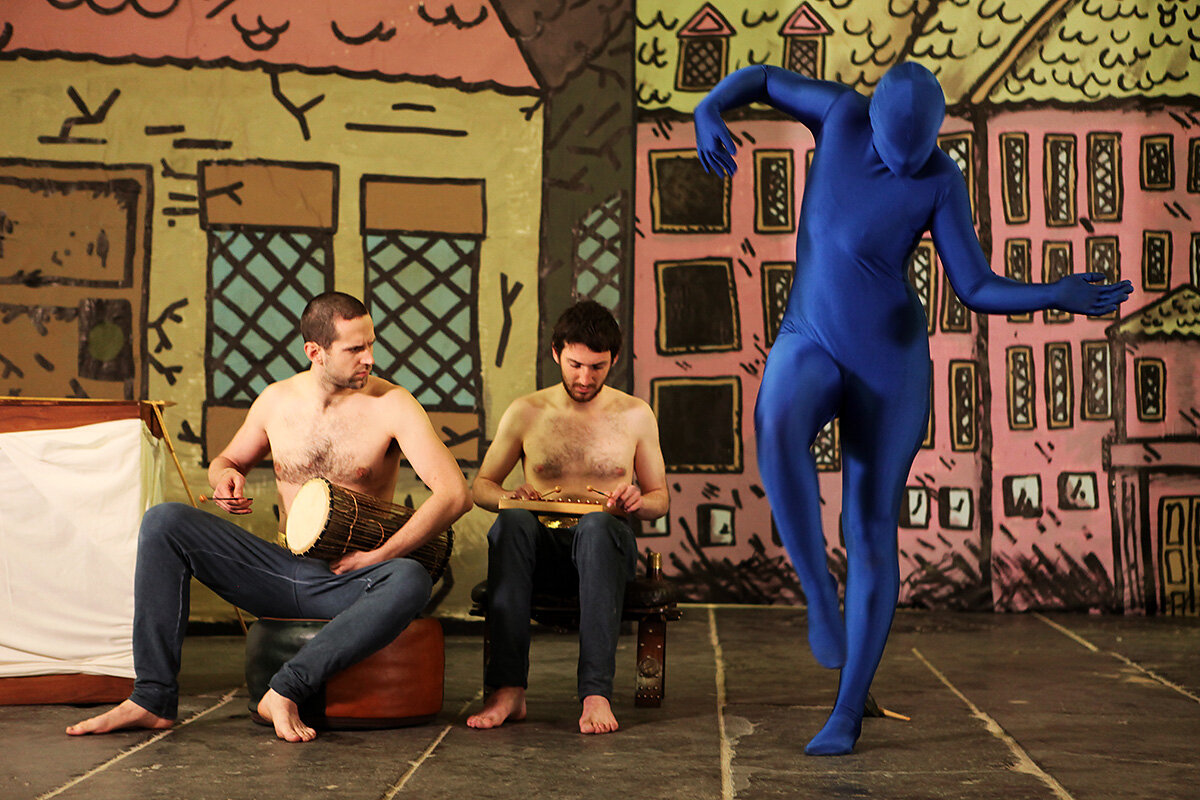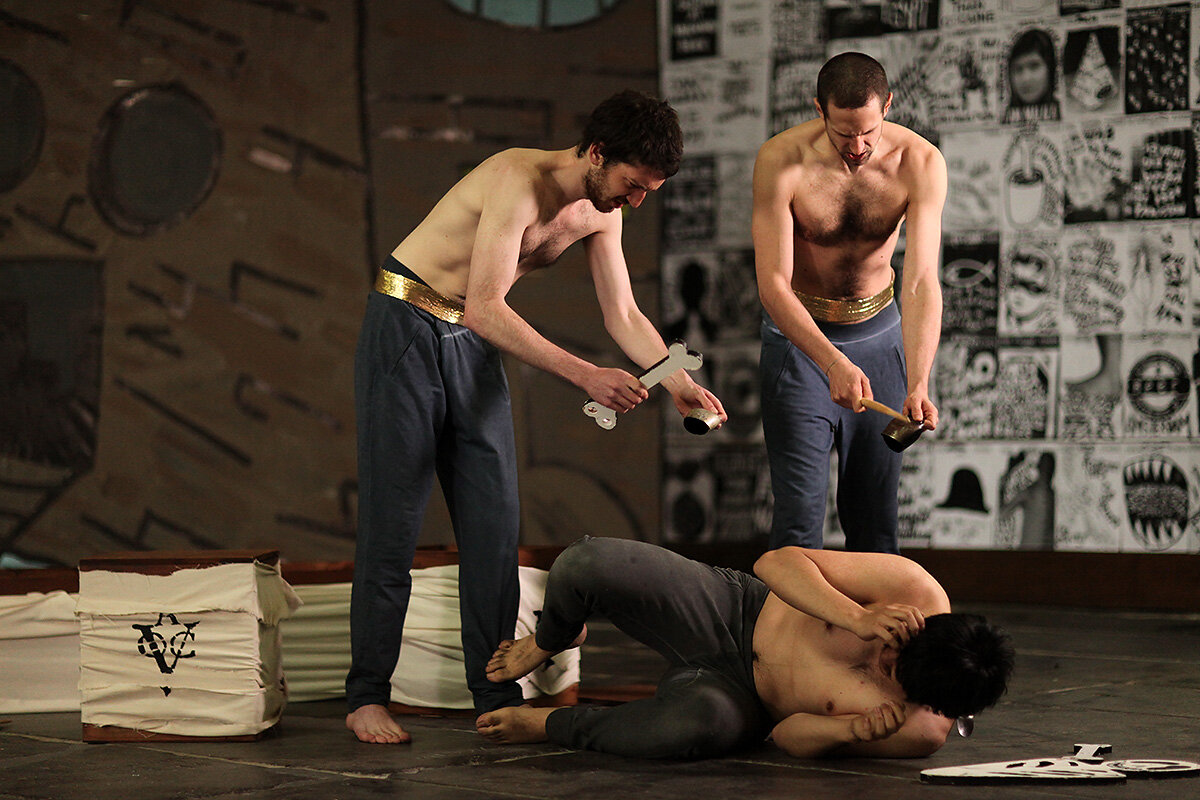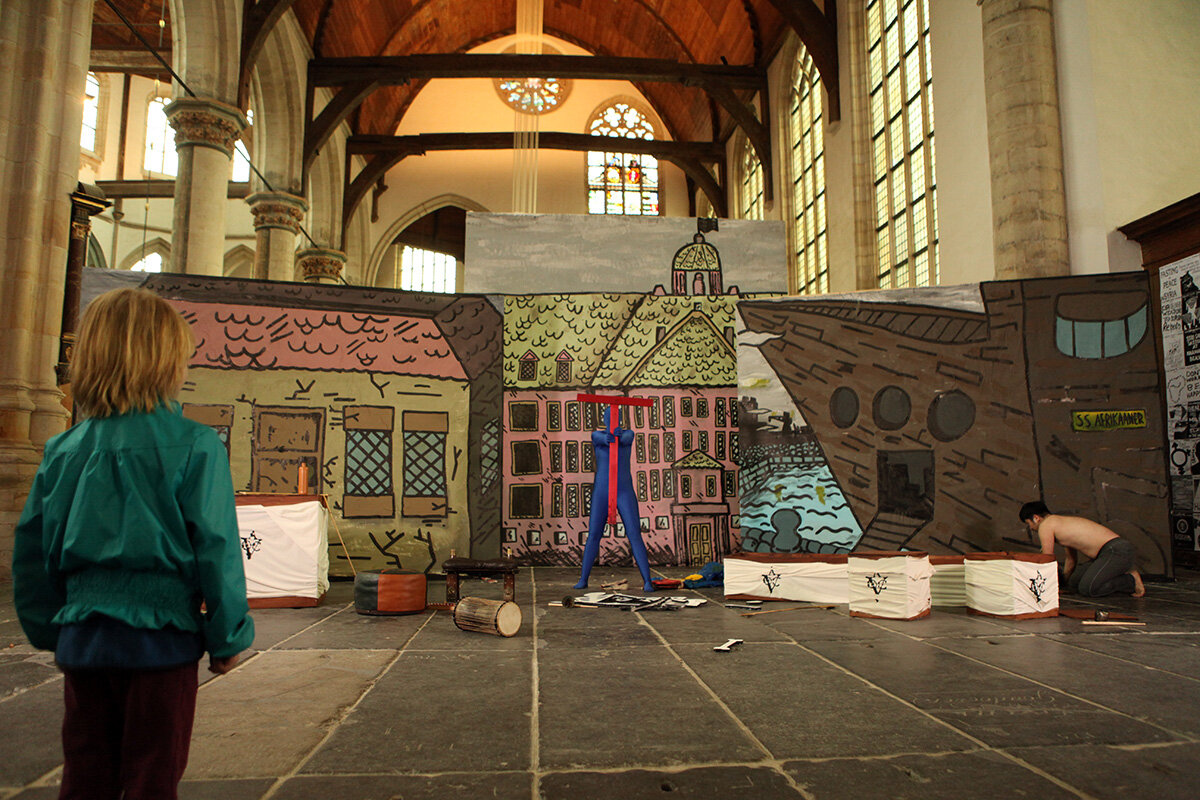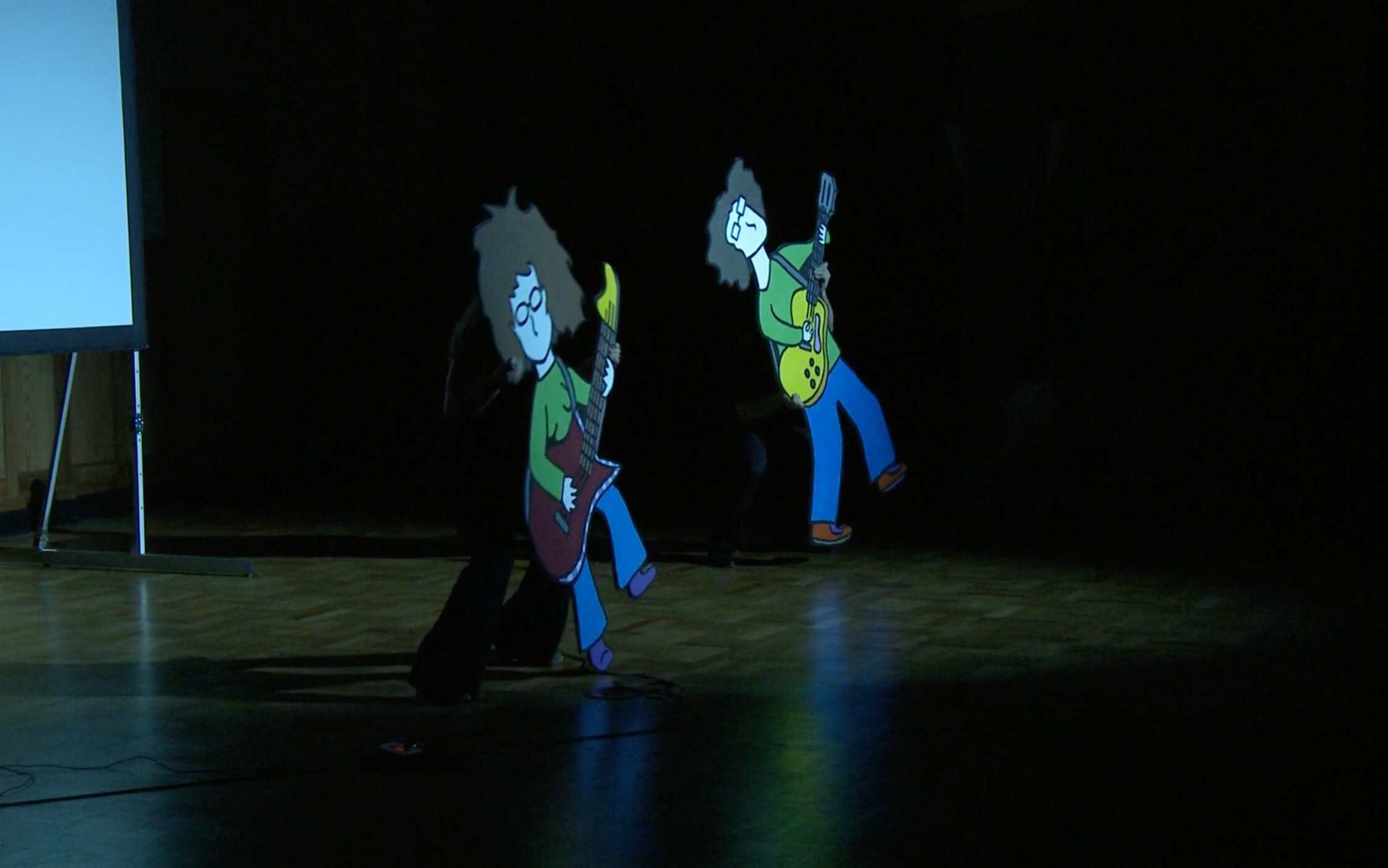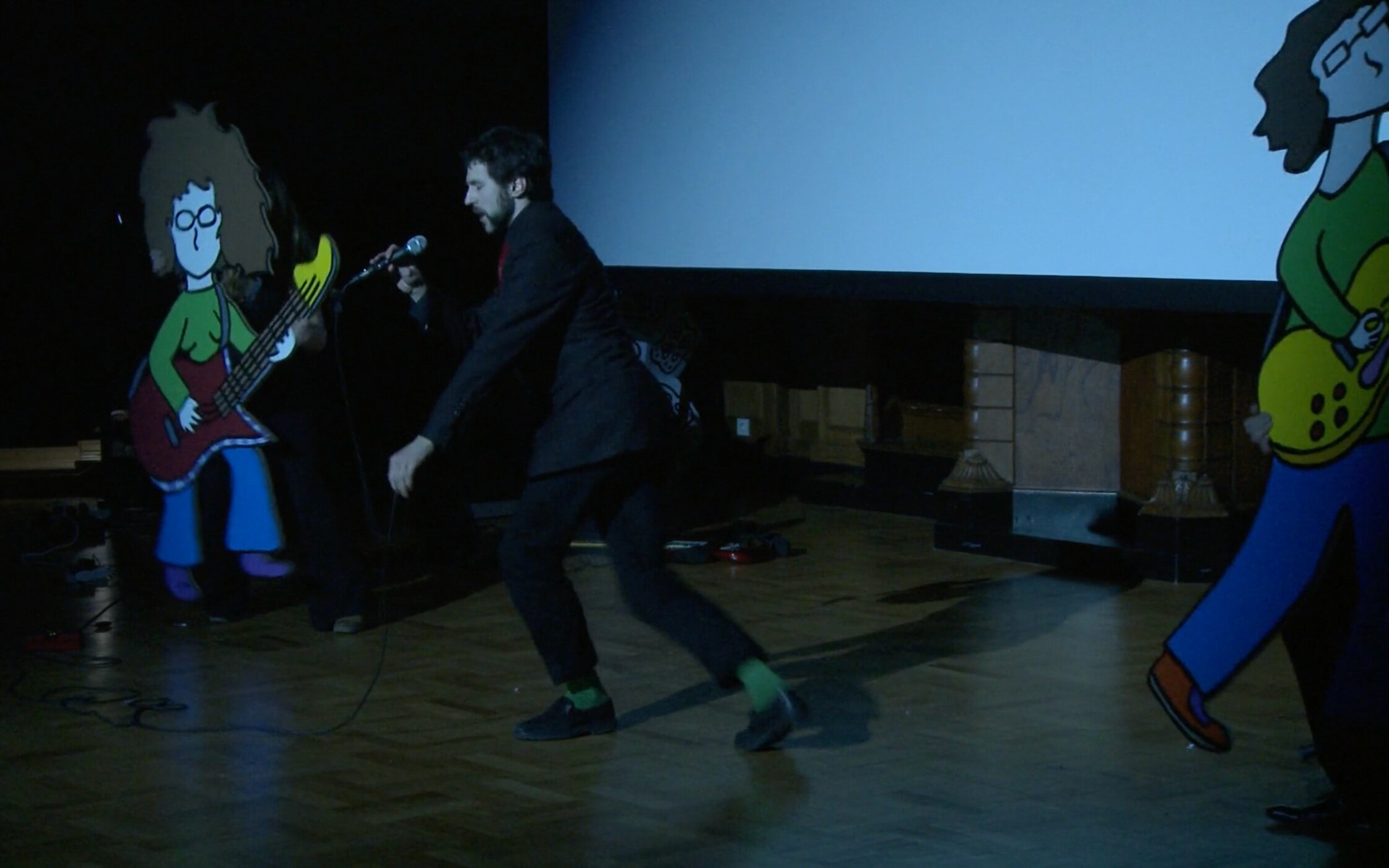Reading and Lifting (for Stephan Blumenschein) (2016)
A few weeks before ditching Holland for cheap and beautiful Belgium, I was invited by Stephan Blumenschein to read a series a of texts that were contributed by various friends and artists for his solo show ‘You do not disappear. We promised him.' in Amsterdam. Within this forty-something minute reading, I was to slip in my own performance which included a narrative about lifting, carrying, weight and the all mighty Eye of Horus. The piece also involved leaving the venue and walking once around the block, which made the wireless mic purposefully cut in and out. After the show my friend Giulia Crispiani told me it was a ‘6 out of 10, could have been better’. Though that was most probably true, this performance is still special to me; it marked the end of my period in Amsterdam and the start of my dedication towards working with solely the body and its modes of expression, leaving behind the installations and stage designs that had previously defined my past pieces. I was 27 years old and without even knowing it yet, I would start my first dance lessons at ISAC in Brussels a few months later.
The Hot Piece Of Coal (2016)
Shown only once during an evening group show in Turin, this was my first experiences making a show for a public that did not share my spoken language. Having gone through ‘some shit’ in the recent months, I decided to present a series of songs and poems about the joys and sorrows of overcoming PTSD (post-traumatic stress disorder). Spectators were given a booklet with translations from English to Italian, and as the music and text was delivered, painted banners were progressively unfolded and displayed, all while a large chunk of coal slowly smoked and smouldered. Some people remarked that the whole experience reminded them a lot of going to church, which I did not mind so much. This piece was part of the show ‘Lost Fortunes / Fuck Karma’ presented at the Laboratorio Artistico Pietra with Italian artists Kim Forni and Sara Cattin, and was rather well received by the local audience. The texts were translated and edited by Giulia Crispiani.
FuckBoy at Museumnacht (2015)
After previously being presented in the white-cube setting of Zoete-Broodjes, the singing and storytelling from FuckBoy was chosen to be shown a few weeks later at Arti et Amicitae for the Amsterdam Museum Night (MuseumsNacht). Since the FuckBoy exhibition was still ongoing in the other venue, another stage/installation had to be produced. The result was a sort of broken and psychedelic green screen that referenced a previous work, and seemed to attract the appreciation of younger people while being completely ignored by older generations. The crowds at Museum Night were somewhat perfect for FuckBoy: open to unexpected and sometimes challenging ideas, all while being in a sort of relaxed party vibe. Most of the audience was clearly buzzed on something that evening. Later that year FuckBoy was presented at Arti one last time for a group show called ‘Parallel Stories’.
FuckBoy (2015)
Shortly after graduating from the Gerrit Rietveld Academy, I was invited by an Amsterdam based project space called Zoete-Broodjes to create a new work within their gallery. This was also the period where I started researching masculinity; with the idea that feminist literature had hugely contributed to the discourse around gender, power and the fluidity, while as writings around masculinity had largely stagnated to the point of being mostly irrelevant. Through my own (weird) art-practice, it was my hopes to begin to create new narratives around masculinity based on clumsiness, vulnerability and self-reflection. At the time I was still working jobs as an illustrator, so with the use of pop music and comic iconography, I put together FuckBoy: a sort of proto-narrative about confused (white) heterosexual masculinity. The 'stage design' was constructed to represented a sort of angry and fed-up environment in which people could walk past or into. This was a couple of years before the #metoo era, but there was already definitely a feeling that something was going to have to change. The exhibition is also mentioned in the bottom paragraphs of this Dutch VICE article, where Jan Hoek describes the show as being “a funny, uncomfortable song, sung between all kinds of brightly coloured objects that seemed to come from some sort of gruesome children's musical.
I left with the feeling that Amsterdam has a lot more exciting things to offer than I actually thought.”
(video by Otto Byström)
Like A Snake In A Nature Reserve (video) (2015)
A couple of months after the presentation of The Snake In The Nature Reserve, I had the opportunity to work with professional camera people in a large studio up in Amsterdam North, as part of the Film Workshop proposed by the Rietveld Academy’s VAV department. At the time I was mostly busy expanding my practice as an illustrator with textile prints and pattern making and was not very interested in making films. However, the idea of making a music video where the body is at the center of the experience was fascinating to me. I had recently seen a video by Bruce Springsteen where he mostly dances in a white teeshirt and found the image a body dancing to be really simple and beautiful. My time in the Rietveld’s VAV department also created a fascination for green screens. I found the keystone tint to be really exciting to look at by itself and way always disappointed when it eventually was turned into another kind of background. I’ve always felt that the potential of green screens was almost always the most exciting thing about them. In 2018, Like A Snake In A Nature Reserve was part of the Special Selection for the International Brussels Dance Film Festival.
The Snake In The Nature Reserve (2014)
Two years after The Crusher, I began borrowing guitars from friends to try and write my own music. I couldn't play any chords at first, so I started by only using the lowest string (the bass string) and ignoring the other five. It was through this sort of monophonic songwriting that this song about a snake was put together, with a sort of looping and repetitive theme. The idea was to become a sort of mixture of man and snake, of subject and object, a narrator that is also the thing that is narrated. I tried doing this piece live with a guitar, but the instrument brought in too much additional information, so I decided to drop it and to just use my body instead. This miniature show was again very well received, which left me somewhat baffled. I stopped making shows for an entire year after this in order to focus on illustration, music and textile design, and would later return to performance through exhibitions and songwriting.
(video recording by Clément Carat & Omri Bigetz)
Wat Jou Nie Doodmaak Nie Maak Jou Vet (2014)
Presented in the Amsterdam’s oldest cathedral, this piece expanded my visual work into something between an art installation and stage design, complete with a perplexing visual performance. Unsurprisingly, moving from comics to choreography was not simple and took for ever. I had almost almost no experience performing myself and somehow thought that I could make some kind of ‘graphic storytelling’ with the use of costumes, props and real humans. The ten minute show consisted of five performers (consisting of visual artists, musicians and graphic designers) in front of gargantuan hand painted backdrops that had to be assembled and stretched inside the church. This piece, though somewhat visually impressive, was really absurd to watch. To add to the list of weird details: since the church was originally built on a cemetery, the ground consists entirely of tombs. We were literally dancing on the graves of the dead! (With Melchior Zimmermann, Masaki Komoto, Lukas Varady-Szabo, Charline Tuma and Pedro Matias.)
The Crusher (2012)
My first performance ever was a cover of the Nova’s 1964 single ‘The Crusher’ at the Orgelpark in Amsterdam. I asked the resident organ player at the Amsterdam OrgelPark to play a simple 12 bar blues progression, accompanied by a friend who would play a ‘bridge’ on another completely atonal medieval organ. I asked Melchior Zimmermann, the guitarist of the band I was drumming for at the time, to draw musicians for me, which where reproduced and enlarged with the aid of a CNC woodcutter and acrylic paint. The whole thing was ridiculous but I thought (very honestly) - ‘fuck it it’ll be funny’. To my huge surprise the audience loved it, and I was overwhelmed with encouragement to continue performing. I was told that there was something very Lynchian about the whole thing, especially in regards to the green socks, which were offered to me by now famous fashion designer Karim Adduchi and have dressed me in many of my pieces since.
